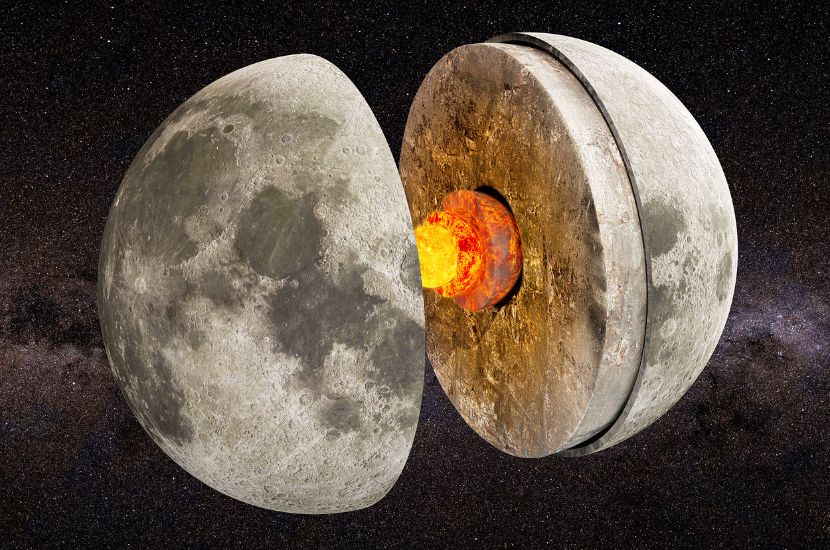Scientists made a fascinating discovery about the Moon. They found that changes in the Moon’s gravity hint at unexpected movement deep beneath its surface. This discovery could change what we know about the Moon’s interior.
The Moon has always been a source of mystery. Its surface is covered with craters and it has no atmosphere, but beneath that rocky exterior, there might be more going on than we thought. Researchers from NASA’s Goddard Space Flight Center and the University of Arizona have been studying the Moon’s gravity.
They found that the Moon’s mass is not solid all the way through. Instead, there might be a layer of low-viscosity material, like a thick, goopy zone, between the Moon’s rocky mantle and its solid metal core.
This layer is rising and falling, much like ocean tides on Earth. The gravitational pull of the Earth and the Sun is causing these movements. This discovery is exciting because it supports theories that have been around for decades but lacked definitive evidence until now.
The researchers used new data to study the Moon’s rigidity under the gravitational influence of Earth and the Sun. They found that the Moon’s mantle has a thick, goopy zone that rises and falls like our tides. This zone is called a low-viscosity zone (LVZ), and it sits at the base of the lunar mantle. The presence of this LVZ could explain some of the Moon’s gravitational anomalies that have puzzled scientists for years.
Understanding the Moon’s interior is important for several reasons. :
- Itelps us learn more about the Moon’s formation and evolution. S
- Itan provide insights into the processes that shape other rocky bodies in our solar system.
- Studying the Moon’s gravity can help us better understand Earth’s own gravitational field and how it affects our planet.
The discovery of the LVZ also raises new questions. How did this layer form? What is its exact composition? And what role does it play in the Moon’s overall structure? Scientists are eager to continue their research to find answers to these questions.
The changes in the Moon’s gravity have revealed surprising movements beneath its surface. This discovery is a significant step forward in our understanding of the Moon’s interior and its evolution.
By studying the Moon, scientists can gain valuable insights into the processes that shape rocky bodies in our solar system. This research could also have implications for our understanding of Earth’s own gravitational field and how it affects our planet.
The Moon continues to be a source of wonder and discovery. As we learn more about its interior, we gain a deeper appreciation for this celestial neighbor. The recent findings about the Moon’s gravity are just the beginning of what promises to be an exciting journey of exploration and discovery.




